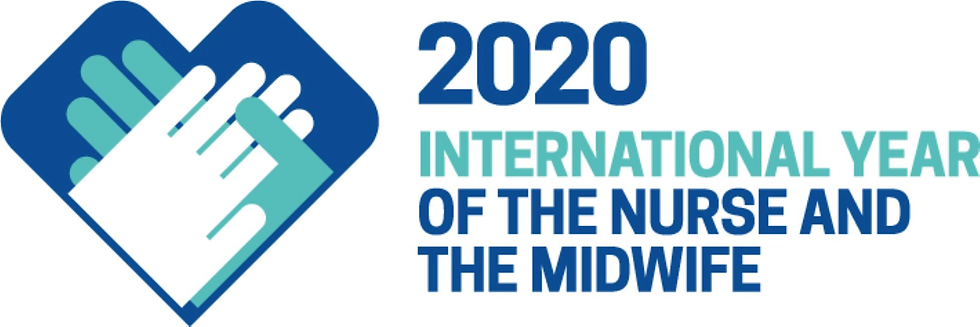2020 has been designated the "Year of the Nurse and the Midwife" by the World Health Organization (WHO). The purpose of this designation is to showcase the remarkable impact nurses make every day.

In addition, I am very proud to note that for the eighteenth straight year, Gallup Polls reveal nurses rate highest in both honesty and ethics [1]. Sadly, WHO is also predicting a nursing/midwife shortfall of nearly 9 million world-wide by the year 2030 if we are to achieve and sustain universal health coverage [2]. With the honor and integrity with the profession, we must look at why nursing is in such peril. I believe there is an underlying dilemma that we continue to sweep under the rug, and it is time we call it out and address it – head-on [3].
The concerns are nursing fatigue and burnout, and they are real. If we are going to maintain our high-quality nursing staff and eliminate the predicted shortage, we must improve the nursing environment. In particular, we must decrease the stress and fatigue nurses - and all nearly all other healthcare providers - experience every day.
My story….
In elementary school, I was convinced I wanted to be a teacher. I would spend hours in front of the chalkboard in my basement, teaching my dolls from the textbooks handed-down to me from my elementary teachers. However, that early career choice changed when I took my first job as a nursing assistant at age fifteen at our local skilled nursing facility. From that moment on, I knew I wanted to be a nurse. Fast forward thirty-plus years, and I have built a career out of my passion. Throughout these thirty years, I purposely positioned my career where I could understand both the challenges of the bedside nurse and how technology can support – or hinder – the nursing practice.
What has changed?
I have witnessed numerous and significant changes in the nursing profession and in the delivery of care over my thirty years. But what strikes me front and center today is how nurses are constantly bombarded with information. From the moment they start their shift, there exists a constant cacophony of inputs vying for his or her attention. Some examples include:
· electronic medical record alerts and reminders
· phone calls
· text messages
· call lights
· worried family members looking for support and answers for their loved ones
As I reflect and attempt to pinpoint why the nursing life became so frantic, I realized that that before 'technology,' the paper chart allowed us to choose when we saw the information. It wasn't pushed to (or on) us. Nurses were able to plan their days based on what they believed to be the most efficient plans for delivering care to their patients.
In this fast-paced, technology-driven world, where information is pushed out an unprecedented rate, nurses no longer have control over how to manage their shift. This is contributing to fatigue and burnout. We have given nurses so much technology that it has had the opposite impact on productivity and efficiency. In addition to the burden technology un-intentionally hands us, the patient too can have unrealistic expectations. Technology has taught society to expect immediate responses. Smart-phone apps return answers at the push of a button. So also, at the push of the call light, patients expect an immediate response, and when nurses don't meet those expectations, it can lead to verbal or even physical abuse of the nurse.
Finally, there are more ethical challenges that nurses and providers are faced with, also complicated by technology. Technology can be a blessing and curse for a family looking for just a few more days with their loved one. We now expect everything out of the technology and when it isn’t able to ‘fix everything’ we are left frustrated and confused. I witnessed the confusion from the family side of technology most recently when my ninety-four year old mother-in-law was hospitalized with confusion and an unknown infection source. The technology, which I could see on the electronic whiteboard in her room, had her listed as a full code, however she was actually a DNR. I questioned the staff and it was quickly corrected, but imagine the ethical dilemma the family, nurses, and providers would have had if CPR had been initiated in error.
So now what……
As technology innovators and leaders, we owe it to our nurses – and all care providers - to reduce the waste and noise. We must begin designing technology solutions that create efficiency and reduce 'noise.' Thinking 'outside the box' and being willing to challenge the norm will help drive improvements that make a difference. As a "seasoned" nurse with experience in operations, bedside nursing, and technology, I have a personal mission to make a difference for our nurses who provide day-to-day care for patients. That is what led me out of the comforts of a leadership position I loved, working with people I admired and cherished, to become a disruptor and innovator in this profession I love. Nurses enter nursing to care for people and to impact patient's lives. Now we need to do the same and for them. We owe it to them. After all, we are looking for 9 million more!
References
[1] Reinhart, RJ. “Nurses Continue to Rate Highest in Honesty, Ethics.” Gallup, 10 Jan. 2020, news.gallup.com/poll/274673/nurses-continue-rate-highest-honesty-ethics.aspx.
[2] “2020 - Year of the Nurse and the Midwife.” World Health Organization, 9 Jan. 2020, www.who.int/news-room/campaigns/year-of-the-nurse-and-the-midwife-2020.
[3] Waddill-Goad, Suzanne M. “Stress, Fatigue, and Burnout in Nursing.” Journal of Radiology Nursing, vol. 38, no. 1, 2019, pp. 44–46., doi:10.1016/j.jradnu.2018.10.005.
Comments